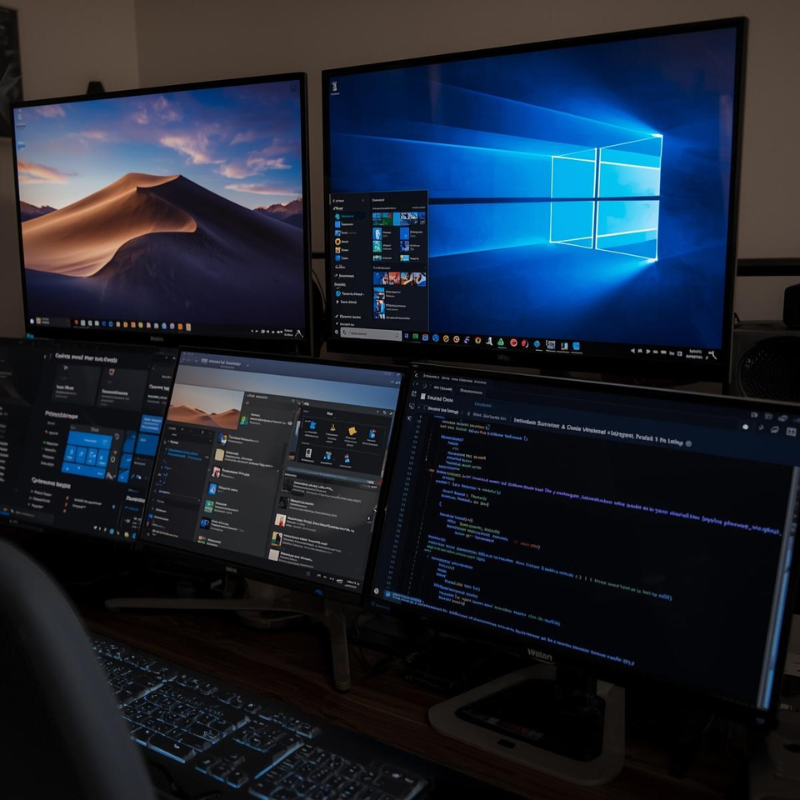Join the Level Discord — connect with IT professionals, share ideas, and get real-time updates
Check it outGeneral
MSPs are juggling Windows, macOS, Linux, and mobile devices every day. Discover how cross-platform tools cut complexity, lower costs, and make multi-OS management simple.

Not long ago, most organizations ran on a single operating system. MSPs could standardize their service stack around Windows, install their chosen tools, and operate efficiently. Fast forward to today and that world no longer exists.
Clients now bring a mix of Windows, macOS, Linux, Android, and iOS into the workplace. The shift to remote and hybrid work, combined with industry-specific requirements, has created a new norm: multi-OS environments. For MSPs, this introduces a unique set of challenges around monitoring, patching, security, and automation.
The good news? Cross-platform tools are helping MSPs unify management, reduce complexity, and scale services without multiplying overhead.
A decade ago, most MSPs would encounter environments where Windows held near-total dominance. That has changed dramatically for several reasons:
For MSPs, that means they rarely walk into a standardized environment anymore. Instead, they inherit heterogeneous ecosystems that require broad technical coverage.
Without a unified approach, MSPs fall into tool sprawl. Consider this scenario:
Each additional tool increases licensing costs, onboarding friction, and technician training requirements. But more importantly, this fragmentation creates visibility gaps. Security alerts may show up in one dashboard while performance issues surface in another. Coordinating responses slows down operations.
In real terms, that translates into:
Cross-platform endpoint management tools eliminate silos by centralizing control in a single dashboard. The benefits for MSPs go beyond convenience.
Imagine an MSP managing a healthcare client with:
Without cross-platform support, patching each OS family requires juggling four separate systems. That’s four patch schedules, four compliance reports, and four dashboards to monitor.
With a cross-platform RMM, patches are delivered through a single policy framework. Reports consolidate automatically, showing compliance status across the entire environment. For industries like healthcare that face strict audits (HIPAA, HITRUST), this efficiency is not optional, it’s survival.
Even with the right tools, MSPs must navigate several challenges:
These complexities highlight why a tool built from the ground up for cross-platform parity is so valuable.
When evaluating solutions, MSPs should focus on capabilities that genuinely simplify management rather than just checking boxes.
Level was designed for MSPs who face exactly these challenges. Instead of retrofitting support for additional OS, we built cross-platform management as a core principle.
Level makes managing heterogeneous environments as simple as managing a single OS — without sacrificing depth or control.
Cross-platform complexity isn’t going away. If anything, it’s accelerating:
MSPs who adopt cross-platform tools now will not only simplify today’s challenges, they’ll be positioned to handle what comes next.
MSPs can’t afford inefficiency in a world where clients expect speed, security, and flexibility. Juggling multiple OS-specific tools creates silos, raises costs, and slows down service.
Cross-platform tools change the equation. They centralize monitoring, standardize security, and streamline automation across every endpoint, regardless of OS. With the right platform, MSPs gain the agility to scale, the visibility to secure, and the efficiency to deliver consistent results.
At Level, we believe MSPs shouldn’t have to choose between simplicity and capability. That’s why we built a solution that treats cross-platform management not as a feature, but as a foundation.
For MSPs, the message is clear: simplify multi-OS environments now, and future-proof your operations for the next wave of IT complexity.
At Level, we understand the modern challenges faced by IT professionals. That's why we've crafted a robust, browser-based Remote Monitoring and Management (RMM) platform that's as flexible as it is secure. Whether your team operates on Windows, Mac, or Linux, Level equips you with the tools to manage, monitor, and control your company's devices seamlessly from anywhere.
Ready to revolutionize how your IT team works? Experience the power of managing a thousand devices as effortlessly as one. Start with Level today—sign up for a free trial or book a demo to see Level in action.